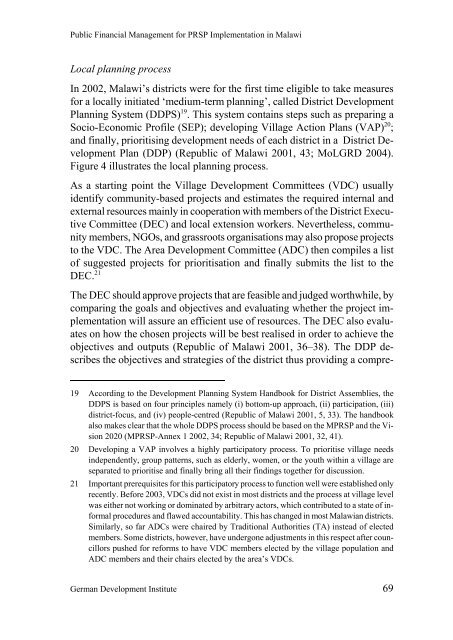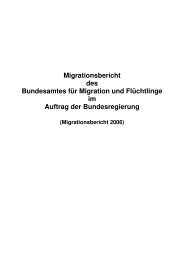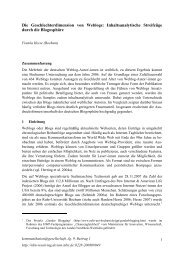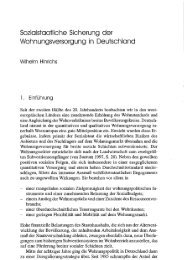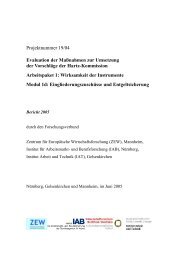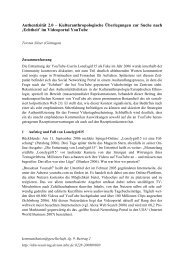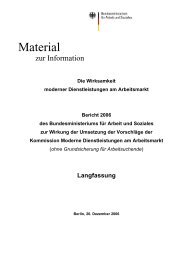Public Financial Management for PRSP - Deutsches Institut für ...
Public Financial Management for PRSP - Deutsches Institut für ...
Public Financial Management for PRSP - Deutsches Institut für ...
You also want an ePaper? Increase the reach of your titles
YUMPU automatically turns print PDFs into web optimized ePapers that Google loves.
<strong>Public</strong> <strong>Financial</strong> <strong>Management</strong> <strong>for</strong> <strong>PRSP</strong> Implementation in Malawi<br />
Local planning process<br />
In 2002, Malawi’s districts were <strong>for</strong> the first time eligible to take measures<br />
<strong>for</strong> a locally initiated ‘medium-term planning’, called District Development<br />
Planning System (DDPS) 19 . This system contains steps such as preparing a<br />
Socio-Economic Profile (SEP); developing Village Action Plans (VAP) 20 ;<br />
and finally, prioritising development needs of each district in a District Development<br />
Plan (DDP) (Republic of Malawi 2001, 43; MoLGRD 2004).<br />
Figure 4 illustrates the local planning process.<br />
As a starting point the Village Development Committees (VDC) usually<br />
identify community-based projects and estimates the required internal and<br />
external resources mainly in cooperation with members of the District Executive<br />
Committee (DEC) and local extension workers. Nevertheless, community<br />
members, NGOs, and grassroots organisations may also propose projects<br />
to the VDC. The Area Development Committee (ADC) then compiles a list<br />
of suggested projects <strong>for</strong> prioritisation and finally submits the list to the<br />
DEC. 21<br />
The DEC should approve projects that are feasible and judged worthwhile, by<br />
comparing the goals and objectives and evaluating whether the project implementation<br />
will assure an efficient use of resources. The DEC also evaluates<br />
on how the chosen projects will be best realised in order to achieve the<br />
objectives and outputs (Republic of Malawi 2001, 36–38). The DDP describes<br />
the objectives and strategies of the district thus providing a compre-<br />
19 According to the Development Planning System Handbook <strong>for</strong> District Assemblies, the<br />
DDPS is based on four principles namely (i) bottom-up approach, (ii) participation, (iii)<br />
district-focus, and (iv) people-centred (Republic of Malawi 2001, 5, 33). The handbook<br />
also makes clear that the whole DDPS process should be based on the M<strong>PRSP</strong> and the Vision<br />
2020 (M<strong>PRSP</strong>-Annex 1 2002, 34; Republic of Malawi 2001, 32, 41).<br />
20 Developing a VAP involves a highly participatory process. To prioritise village needs<br />
independently, group patterns, such as elderly, women, or the youth within a village are<br />
separated to prioritise and finally bring all their findings together <strong>for</strong> discussion.<br />
21 Important prerequisites <strong>for</strong> this participatory process to function well were established only<br />
recently. Be<strong>for</strong>e 2003, VDCs did not exist in most districts and the process at village level<br />
was either not working or dominated by arbitrary actors, which contributed to a state of in<strong>for</strong>mal<br />
procedures and flawed accountability. This has changed in most Malawian districts.<br />
Similarly, so far ADCs were chaired by Traditional Authorities (TA) instead of elected<br />
members. Some districts, however, have undergone adjustments in this respect after councillors<br />
pushed <strong>for</strong> re<strong>for</strong>ms to have VDC members elected by the village population and<br />
ADC members and their chairs elected by the area’s VDCs.<br />
German Development <strong>Institut</strong>e 69


